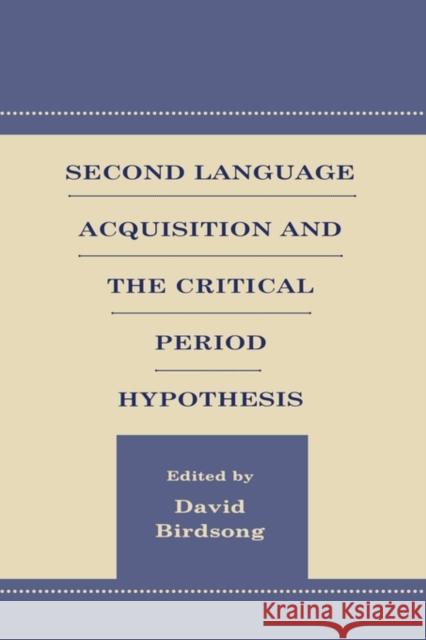Second Language Acquisition Research: Theory-Construction and Testing » książka
Second Language Acquisition Research: Theory-Construction and Testing
ISBN-13: 9780805830842 / Angielski / Twarda / 1999 / 208 str.
Second Language Acquisition and the Critical Period Hypothesis is the only book on the market to provide a diverse collection of perspectives, from experienced researchers, on the role of the Critical Period Hypothesis in second language acquisition. It is widely believed that age effects in both first and second language acquisition are developmental in nature, with native levels of attainment in both to be though possible only if learning began before the closure of a "window of opportunity" a critical or sensitive period. These seven chapters explore this idea at length, with each contribution acting as an authoritative look at various domains of inquiry in second language acquisition, including syntax, morphology, phonetics/phonology, Universal Grammar, and neurofunctional factors. By presenting readers with an evenly-balanced take on the topic with viewpoints both for and against the Critical Period Hypothesis, this book is the ideal guide to understanding this critical body of research in SLA, for students and researchers in Applied Linguistics and Second Language Acquisition."
In language learning, the rule of thumb is: the earlier the better. Children exposed to language from birth are uniformly successful in first language acquisition (L1A), whereas those deprived of contact with language during childhood are pathologically deficient. In second language acquisition (L2A), the difficulty of learning after puberty is routinely attested anecdotally and has been the subject of numerous scientific studies. It is widely believed that age effects in both are developmental in nature. Native levels of attainment in L1A and L2A are thought to be possible only if learning began before the closure of a "window of opportunity"--a critical or sensitive period.
Increasingly, this popular wisdom is being called into question. Triggering this reevaluation is evidence that some late-starting learners achieve native-like competence in a second language and evidence of age effects past the presumed closure of the window of opportunity for learning. As the debate takes shape, some of the most renowned researchers in the field are weighing in on the issue. Their thoughts and evidence are presented in this volume.
The chapters approach the Critical Period Hypothesis (CPH) from diverse perspectives and are evenly balanced in favor of and against the CPH-L2A. Each of the contributors brings authority and an international reputation to the question. As the papers encompass many domains of inquiry in L2A--syntax, morphology, phonetics/phonology, Universal Grammar, and neurofunctional factors in language--this volume should appeal to a wide audience of researchers and advanced students.











